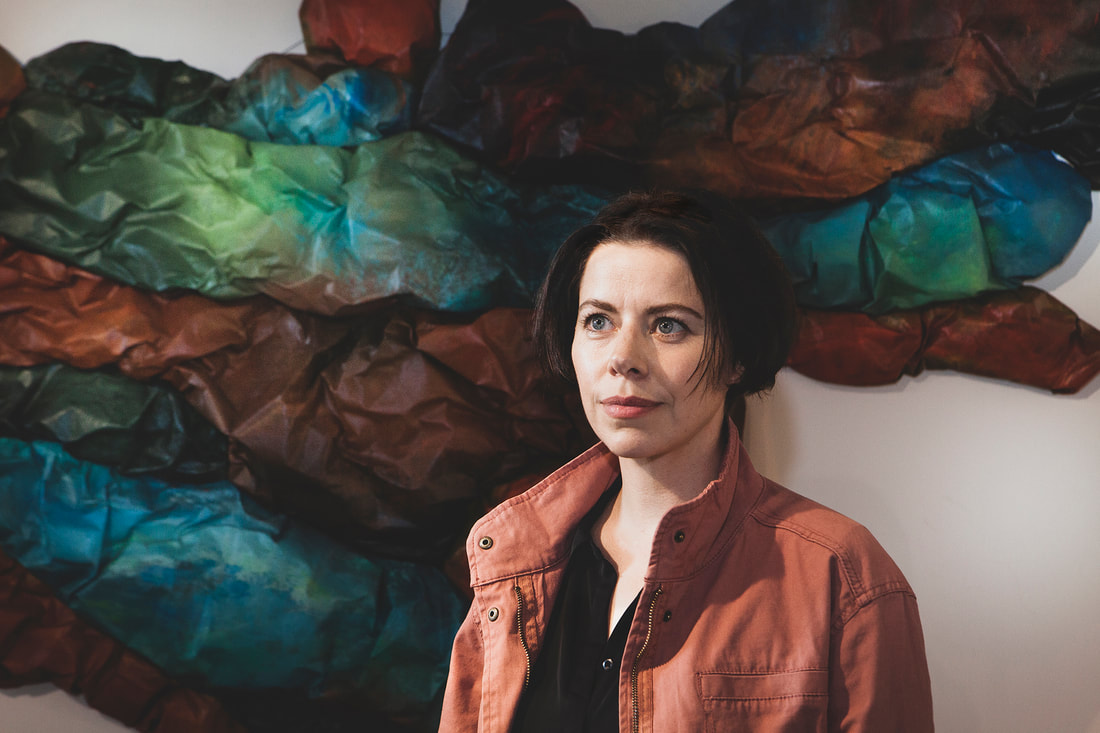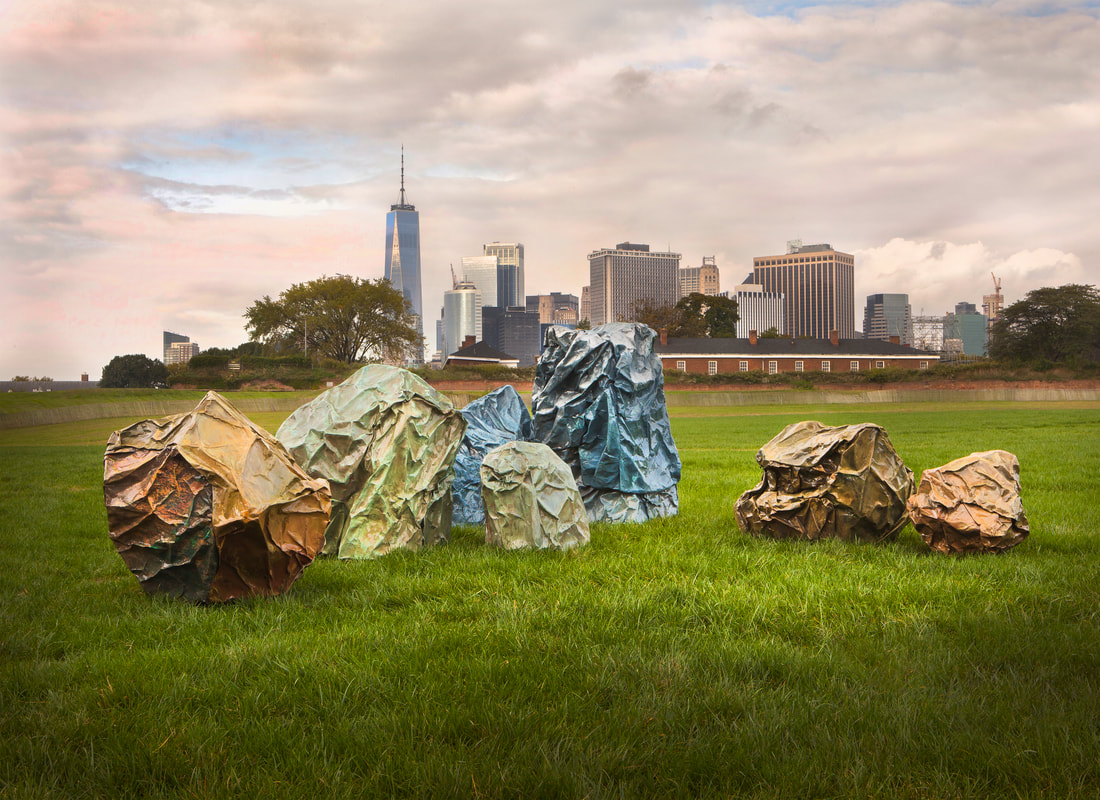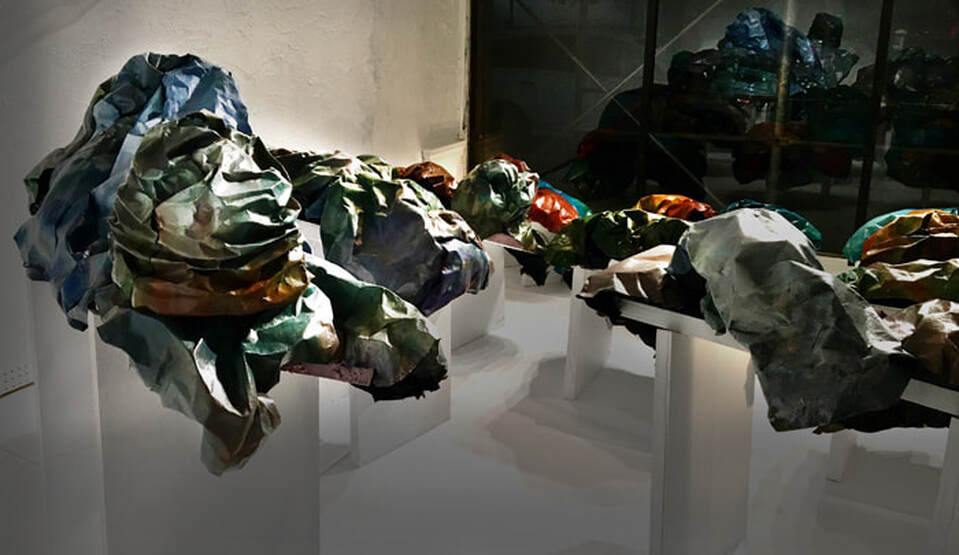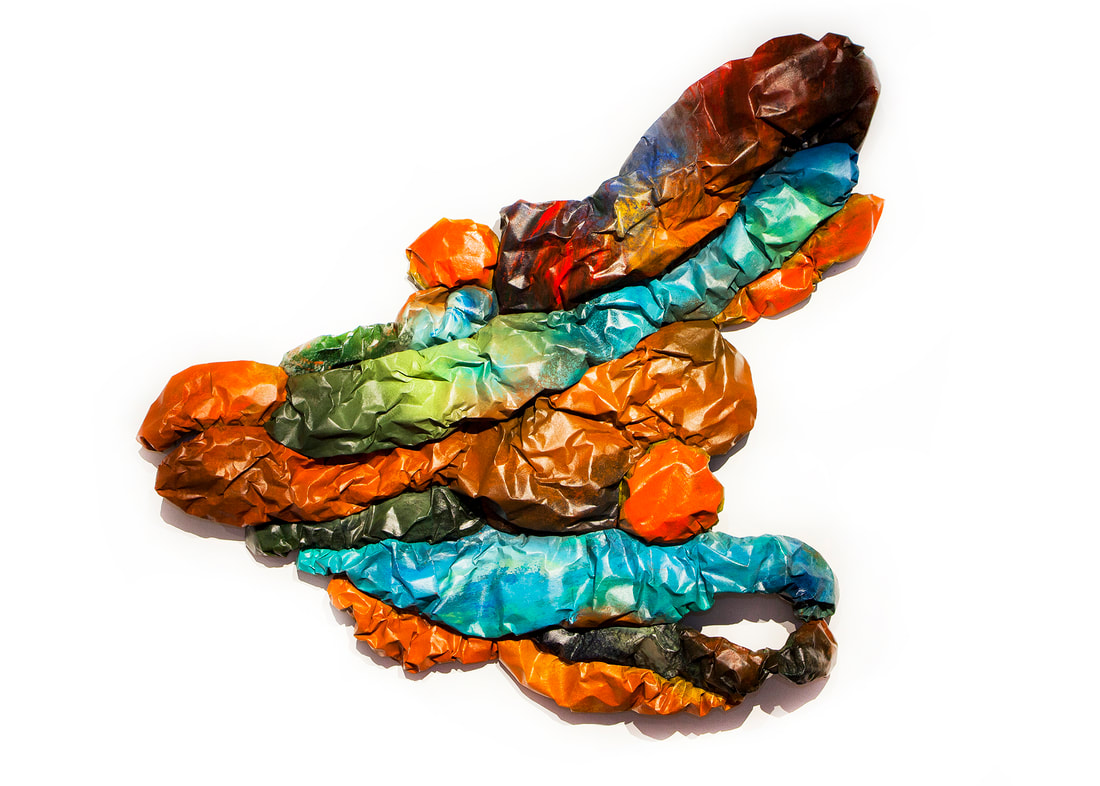Agnes Deja
Interview by Kiran Gurung, Colloquium Manager
Kiran Gurung: What inspired you to become a visual artist?
Agnes Deja: Both art and science strive to pinpoint and record certain things that are unknown or cannot be expressed verbally. My early inspirations stem from transcendental experiences in nature: being surrounded by vast spaces, trying to keep in memory everything I was capable of perceiving through all of my senses. Having graduated in with a degree in psychology before studying fine art, I look at my own artistic process as a case study of human reactions. I am interested in introspection, how an expressive artistic process gives us access to the unconscious, and how we react to certain colors and forms signaling our interdependence with the environment. Finding solutions to the technical problems in sculpture - fighting gravity or melting points, using 3D design and new technologies, or trying to devise ecological ways of working large - are some of my recent inspirations which bridge art, science, and technology.
Agnes Deja: Both art and science strive to pinpoint and record certain things that are unknown or cannot be expressed verbally. My early inspirations stem from transcendental experiences in nature: being surrounded by vast spaces, trying to keep in memory everything I was capable of perceiving through all of my senses. Having graduated in with a degree in psychology before studying fine art, I look at my own artistic process as a case study of human reactions. I am interested in introspection, how an expressive artistic process gives us access to the unconscious, and how we react to certain colors and forms signaling our interdependence with the environment. Finding solutions to the technical problems in sculpture - fighting gravity or melting points, using 3D design and new technologies, or trying to devise ecological ways of working large - are some of my recent inspirations which bridge art, science, and technology.
KG: How did you come to use asphalt-infused paper - was it a material you were familiar with, or discovered recently?
AG: I found a leftover piece of the industrial asphalt-infused paper some three years ago and fell in love with it. It had interesting qualities: rubbery and somewhat elastic surface, matte black with lighter sepia marks when rubbed off at edges. It was also its sinister conceptual symbolics that I found attractive. Asphalt and tar allude to uncurbed urban sprawl as well as unsustainable energy sources. The work evolved from textural wall hanging painterly pieces to larger free standing sculptural installations.
AG: I found a leftover piece of the industrial asphalt-infused paper some three years ago and fell in love with it. It had interesting qualities: rubbery and somewhat elastic surface, matte black with lighter sepia marks when rubbed off at edges. It was also its sinister conceptual symbolics that I found attractive. Asphalt and tar allude to uncurbed urban sprawl as well as unsustainable energy sources. The work evolved from textural wall hanging painterly pieces to larger free standing sculptural installations.
KG: What is the main message you are trying to express about environmentalism through your art?
AG: My larger installations in asphalt paper are painted in lush colors in acrylics and represent a sugar (plastic) coated, photoshopped version of the nature we surround ourselves with, while at the same time our natural environment is being destroyed. We live in an anthropocentric bubble, an illusion that we can own and control nature. We are unfortunately all collectively responsible for this anthropogenic nightmare of growing pollution and are trapped in a maze of consumption. While I hope my work can inspire environmental change, my main area of interest is in environmental consciousness: how are we wired to nature, how the disconnect with nature is affecting our mental health, what visual or spatial characteristics we respond to.
AG: My larger installations in asphalt paper are painted in lush colors in acrylics and represent a sugar (plastic) coated, photoshopped version of the nature we surround ourselves with, while at the same time our natural environment is being destroyed. We live in an anthropocentric bubble, an illusion that we can own and control nature. We are unfortunately all collectively responsible for this anthropogenic nightmare of growing pollution and are trapped in a maze of consumption. While I hope my work can inspire environmental change, my main area of interest is in environmental consciousness: how are we wired to nature, how the disconnect with nature is affecting our mental health, what visual or spatial characteristics we respond to.
KG: Do you have any upcoming exhibitions or news you'd like to share?
AD: In mid-October I’ll be in Portland, Oregon, for a sculpture conference and in a group show there. I have recently started working from the Elizabeth Foundation in Manhattan, as well as from the Sculpture Space NYC, adding a digital touch to my work with 3D designed and printed ceramics. In general, I'm working on using more technological shortcuts to create and fabricate work. I’m using industrial waste materials again for a show in January, and preparing a few public art proposals.
AD: In mid-October I’ll be in Portland, Oregon, for a sculpture conference and in a group show there. I have recently started working from the Elizabeth Foundation in Manhattan, as well as from the Sculpture Space NYC, adding a digital touch to my work with 3D designed and printed ceramics. In general, I'm working on using more technological shortcuts to create and fabricate work. I’m using industrial waste materials again for a show in January, and preparing a few public art proposals.
See more of Agnes' work on her website





